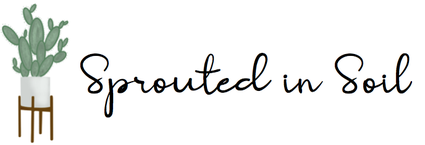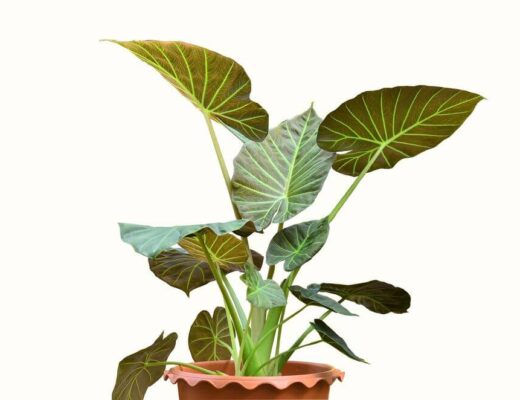The Peperomia ‘Piccolo Banda’, also known by its scientific name Peperomia albovittata ‘Piccolo Banda’, is a cute, compact houseplant that is great for desktops or small windowsills. The coin shaped leaves are an iridescent silver striped with deep green and purple veins. This plant is low maintenance and propagates easily. If this plant sounds like a good fit for you, keep on reading to learn more about Peperomia ‘Piccolo Banda’ care!
Table of contents
Succulents have risen in popularity in recent years because they are both attractive and low-maintenance. Plants of this category usually produce thick, waxy leaves that allow them to store water for long periods of time. For houseplant collectors, this means their potted succulent will thrive even if they forget to water it every once in a while. If you’re looking to add a succulent (in this case, a semi-succulent) to your home, office, or patio, consider the charming Peperomia ‘Piccolo Banda’.
You can recognize the Peperomia ‘Piccolo Banda’ by its nickel-sized leaves, which are striped with shades of dark green and silver. Most peperomia plants are native to South America. However, the Peperomia albovittata originated in the Netherlands, where different peperomia cultivars were crossbred to create the ultimate eye-catching houseplant. With a maximum height and width of one foot, this plant would be a good choice for decorating a desktop or windowsill.
Quick Facts
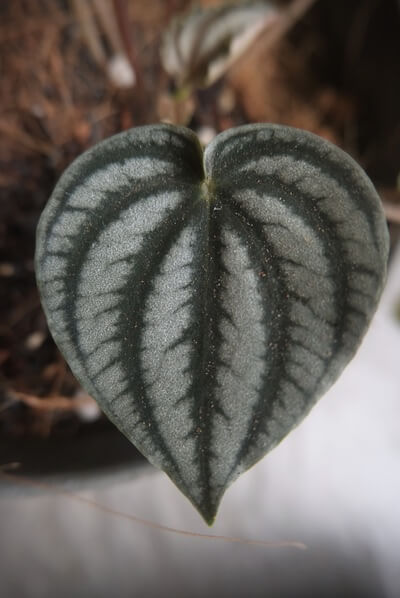
- Common Name: Peperomia ‘Piccolo Banda’, Peacock Plant
- Scientific Name: Peperomia albovittata ‘Piccolo Banda’
- Mature Size: up to 1 foot all
- Sunlight: bright, indirect sun
- Water: when top 2 inches of soil is dry
- Soil: well-draining soil, loamy
- Temperature: 60°F-86°F
- Propagation: stem cuttings, leaves
- Hardiness Zone: 9-11
- Toxicity: not toxic to pets and humans
Growth Pattern and Habits
Like many other succulents, the Peperomia ‘Piccolo Banda’ grows slowly and stays relatively compact. Similarly, their roots don’t spread like that of other plants, so repotting is rarely necessary. To maintain its healthy, bushy look, regularly prune the plant of dying leaves and leggy stems.
The active growing season of the Peperomia ‘Piccolo Banda’ occurs in the spring. During this season, the plant may produce several small green or yellow flowers. These Peperomia ‘Piccolo Banda’ flowers grow on stalks in a spear-like manner and are often too small to be noticeable.
Many owners choose to prune off the flowers when the plant blooms to direct more energy to the leaves. And this is a good choice because Peperomia ‘Piccolo Banda’ flowers are very small and provide none of the intrigue that the leaves do.
If raised as an indoor plant, a Peperomia ‘Piccolo Banda’ is full grown when it reaches one foot tall. Once mature, propagation is easy. Stem and leaf cuttings are used in Peperomia ‘Piccolo Banda’ propagation and yield great results.
Sunlight
Correct sunlight is crucial to Peperomia ‘Piccolo Banda’ care. Being a tropical plant, the Peperomia ‘Piccolo Banda’ does best in bright, indirect sunlight. It can also tolerate low light conditions, but the leaves may be small or lose their striped effect as a result. On the other hand, exposure to too much direct sunlight can scorch the plant’s leaves and cause them to fall off.
For best results, keep your peperomia indoors and away from direct sunlight. Any room in your house with a window should work just fine, you just have to consider how close to the window the plant should be based on the direction it’s facing.
If your plant looks leggy or produces small, pale leaves, try moving it to a sunnier location to expose your Peperomia ‘Piccolo Banda’ to more light. If you choose to place your peperomia outside, choose a spot that stays shaded for most of the day.
Expert Tip – Peperomia ‘Piccolo Banda’ pruning should be done when your plant looks leggy, to maintain a tight shape. You can use the pruned stems and leaves for propagation!
Water
Peperomia ‘Piccolo Banda’ watering is easy and hands off! The Peperomia ‘Piccolo Banda’ requires minimal watering due to the superior water-retaining ability of its leaves. To prevent the risk of overwatering, wait until the top two inches of the soil has dried out completely before adding more water to the pot. Then, add just enough water to rehydrate the soil. Choosing a pot that’s the right size for your plant will also minimize the risk of overwatering.
Most people find that watering their peperomia once a week will satisfy its needs. Those who live in an arid climate may have to water their plants more frequently. Keep in mind that the Peperomia ‘Piccolo Banda’ is extremely drought-hardy and prefers to dry out completely between watering sessions.
Soil
In the rainforest, peperomia plants grow off the ground where shallow piles of organic matter are collected, such as on tree trunks or in the forest canopy. Therefore, the plant’s roots are optimized for rich, aerated soil. Your Peperomia ‘Piccolo Banda’ will require a well-draining, low-density soil that’s also high in nutrients. Along with the right soil, you should also use a pot with drainage holes.
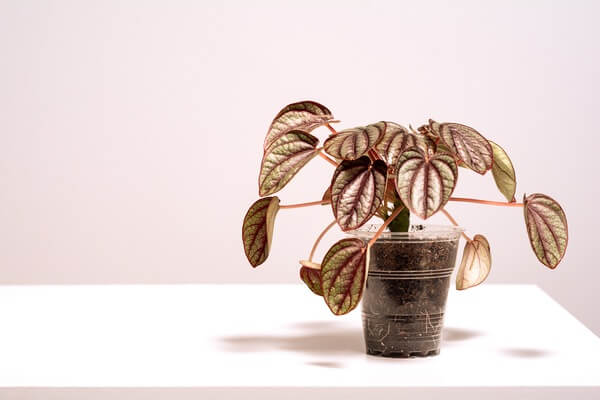
An easy way to get the right balance between nutrients and drainage is to mix together equal amounts of potting soil and cactus soil. Alternatively, you can toss your favorite general potting mix with some orchid bark, perlite, or coconut coir to maximize drainage and aeration. If you need more nutritional content in your substrate, try adding a small amount of compost.
Temperature and Humidity
The Peperomia ‘Piccolo Banda’ will look and grow best in tropical conditions with a temperature range of 65°F-85°F. The Peperomia ‘Piccolo Banda’ likes a moderate humidity range of 40%-50%. Knowing this, the best way to achieve these ideal ranges is to raise your peperomia plant indoors.
Don’t spray or mist your plant to boost a Peperomia ‘Piccolo Banda’s humidity. If you live in an arid environment, you can boost your indoor humidity with a pebble tray, humidifier, or a light daily misting.
Fertilization
The Peperomia ‘Piccolo Banda’ has relatively low fertilizer needs compared to many other houseplants. During the active season, you can use any potted plant fertilizer diluted to one-quarter strength, applied once a month.
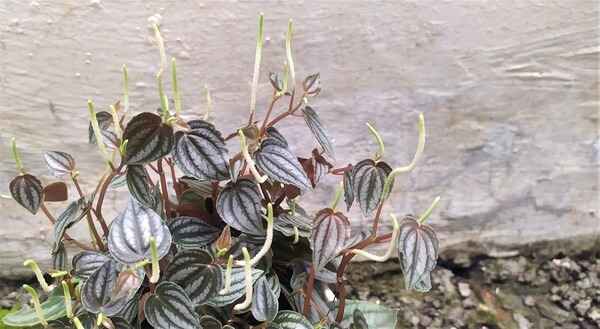
Too much fertilizer will damage the plant’s delicate roots, so always wait a full month between feedings. Avoid fertilizing during the fall and winter, when the plant goes dormant and stops absorbing nutrients from the soil.
Propagation
Mastering Peperomia ‘Piccolo Banda’ propagation is so useful when you want to grow your collection, as these plants are sometimes hard to find in stores. When you have a mature, full grown, healthy Peperomia ‘Piccolo Banda’, it’s time to propagate. To increase your chances of success, save this task for the spring or summer when the plant’s in its active growth phase. In general, Peperomia ‘Piccolo Banda’ propagation is done using one of two techniques.
Propagation by Stem Cuttings
- Choose stems that look healthy, measure at least two inches long and have at least two leaves attached.
- Cut the stems with a pair of sterilized shears and place them cut side down in a container of water. Ensure that the stems are propped up to keep the leaves above the water’s surface.
- Cover the container with a plastic bag to trap humidity and place it in a warm, well-lit area.
- Cuttings will begin to produce roots after about ten to fifteen days.
- Once roots are two inches long, transfer the cuttings into a container with well-draining soil.
- Keep the soil moistened until the cuttings show signs of new growth. At this time, you can provide this new Peperomia ‘Piccolo Banda’ with normal care.
Propagation by Leaves
Because there are more leaves than stems on the Peperomia ‘Piccolo Banda’, most experts recommend propagating the plant with leaf cuttings. Let’s discuss how to successfully grow new plants by using leaves!
- Cut a well-sized, healthy leaf from the plant with a pair of sterile shears. Then, cut this leaf in half horizontally. Dip the cut end of the leaf in some rooting hormone and plant it cut-side down in a container of well-draining soil.
Exper Tip – Try to plant several leaf cuttings at the same time in case some of them don’t root.
- Once you have them planted, water the soil and cover the container with a plastic bag. After several weeks, you should see new growth sprouting from the soil beside the leaf cutting.
- At this time, the cutting is strong enough to be replanted when the new sprouts produce their own leaves, which is when you can transfer the young plant to its own pot. At this point, resume normal Peperomia ‘Piccolo Banda’ care.
Patience is key with this method. Compared to stem cuttings, leaf cuttings can take a longer time to develop roots. To encourage rooting, choose a container that’s wide enough to allow at least two inches of space between cuttings.
Common Issues
Root Rot
With a shallow, delicate root system, the Peperomia ‘Piccolo Banda’ is highly susceptible to root rot. Symptoms of this condition include mushy leaves, yellowing or browning leaves, and dropped leaves.
To prevent this disease from setting in, always check the soil before adding more water to the pot. In most cases, underwatering is a lot safer than overwatering this plant. It is also highly recommended to plant a Peperomia ‘Piccolo Banda’ in a pot with a bottom drainage hole.
Pests
Due to its hard, waxy leaves, the Peperomia ‘Piccolo Banda’ is unlikely to be infested by pests. Still, you should keep an eye out for signs of common pests like spider mites, scale, and mealybugs, especially if you’re raising your peperomia among other plants. Look for spots of discoloration on the leaves and coffee-like residue in the plant’s crevices, all of which are symptoms of a pest infestation.
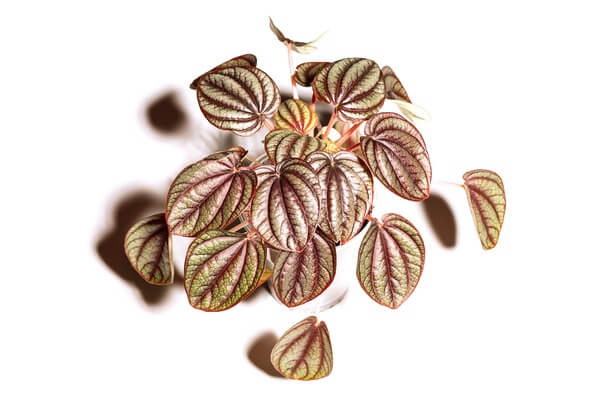
To treat, remove all insects with an alcohol soaked cotton ball. Follow this by spraying your Peperomia ‘Piccolo Banda’ with neem oil once every three to four days until the infestation is resolved. As with any infested plant, be sure to quarantine any diseased Peperomia ‘Piccolo Banda’ to avoid spread throughout your collection.
Toxicity
The Peperomia ‘Piccolo Banda’ is non-toxic to humans and animals. However, that doesn’t make the plant edible. The semi-succulent leaves have a tough, unappetizing texture, which makes it difficult to chew and digest. If you find that a family member or pet has ingested part of the plant, be prepared to deal with possible stomachaches.
Conclusion
The Peperomia ‘Piccolo Banda’ is a great choice if you need an easy to care for plant that doesn’t mind a little neglect. The textured silvery leaves are eye-catching and grow densely on each stem. Proper care along with measured fertilization will increase the number of leaves. To provide even more energy to the leaves, prune away any Peperomia ‘Piccolo Banda’ flowers.
When you provide great Peperomia ‘Piccolo Banda’ care, you will have a beautiful plant to show your friends and family.
